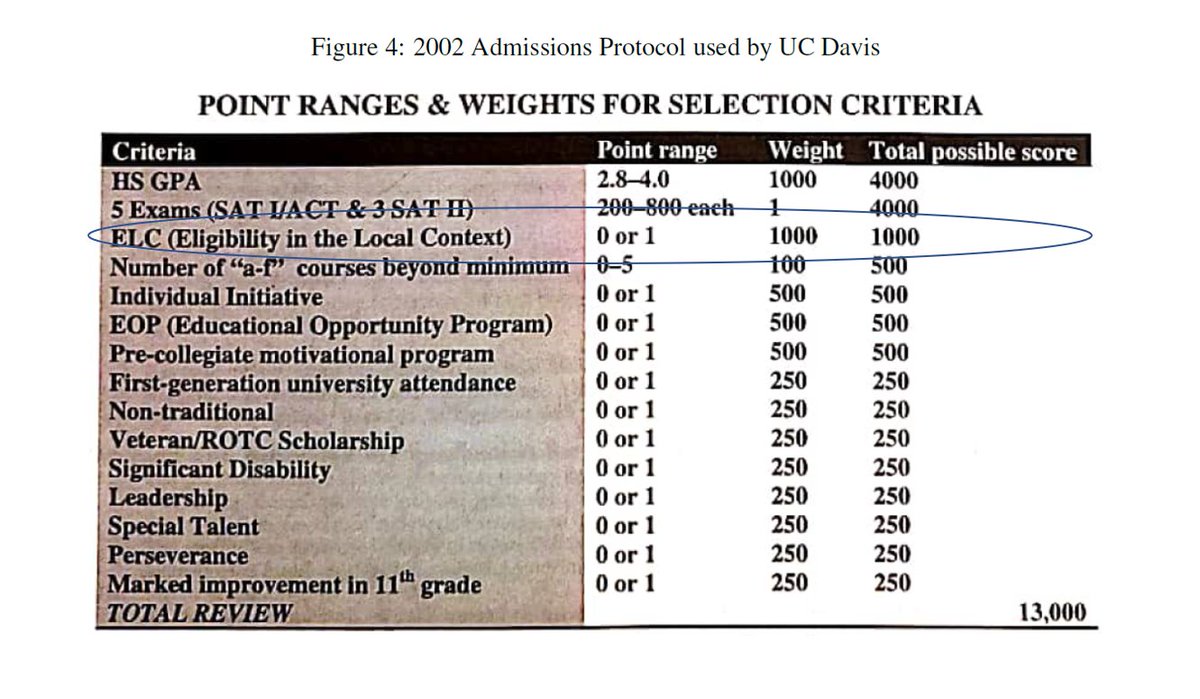New (job market) paper: Quasi-experimental and structural analysis of novel administrative data shows that broadening public university access for lower-testing students can promote economic mobility without efficiency losses. A thread. http://zacharybleemer.com/wp-content/uploads/2020/10/ELC_Paper.pdf #EconTwitter
Since the 1960s, selective public universities have admitted students mostly using the SAT and other measures of academic preparedness, on the theory that highly prepared students can best take advantage of their rigorous coursework. But is that true? Evidence is non-existent.
I pose two research questions. First, how do the benefits of selective university enrollment compare for lower- and higher-testing students? Second, can universities identify low-testing but high-value-add applicants, and how would admitting those students affect diversity?
I answer these questions by analyzing a 2001-2011 University of California 'top percent' admissions policy. Eligibility in the Local Context (ELC) provided large admissions advantages to the top 4% of graduates from every high school, ranking students only by GPA.
Top 4% students became much more likely to get into schools like UC Davis and Irvine, and 600 new students enrolled each year. Almost half of ELC participants were URM, and 90% came from the bottom half of CA high schools by SAT. Their average SATs were at UC's 12th percentile.
First, I investigate student outcomes. Despite ELC participants' disadvantages, more-selective enrollment caused large increases in their degree attainment and earnings (ages 25-27), with annual wages rising by about $20,000 relative to enrolling at less-selective colleges.
In fact, these returns are substantially larger than the AVERAGE value-added of UC enrollment, as estimated using a fixed-effect value-added model across universities à la @OppInsights.
Second, I estimate a structural model (adapted from @adamkapor) to simulate the dynamic enrollment effects of admissions policies. Top percent policies cause net increases in lower-income and URM enrollment; e.g., a 9% policy would increase UC's URM enrollment by 10 percent.
Finally, I find that the relationship between students' model-based application 'merit' and the return to university selectivity is weak and slightly NEGATIVE: lower-'merit' UC applicants derive as much or greater value from more-selective universities as higher-'merit' students.
In sum, the paper shows that university admissions policies that target high-GPA low-SAT applicants can simultaneously promote economic mobility (through broader university access) and increase universities' economic value-added.
This study complements my work on affirmative action and a recent paper on Texas Top Ten by @Econ_Sandy, @JeffDenning, and @rothstein_jesse: quasi-experimental studies of the medium-run effects of access-oriented U.S. admission policies evince BIG economic mobility potential.
The findings also present a new challenge to using the SAT. Many recent books argue that tests are unfair and/or wasteful. This study suggests that tests are inefficient; they do not identify the students who would most benefit from selective universities. @DSMarkovits @paultough
Thanks to @BerkeleyCSHE and @NAEduc for supporting this research, to @MD4SG for its 'Best Paper Award' earlier this year, and to you for reading! Once again, you can read the full paper here: http://zacharybleemer.com/wp-content/uploads/2020/10/ELC_Paper.pdf

 Read on Twitter
Read on Twitter











